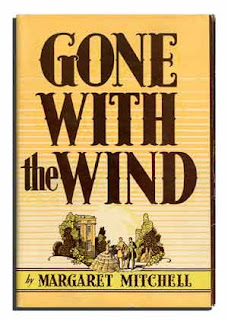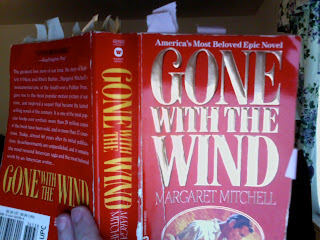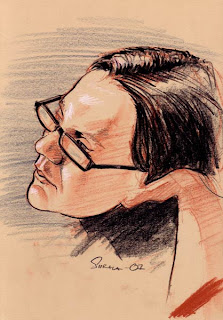 I completed nine books from the 'official' listing + 3 books from my alternates list.
I completed nine books from the 'official' listing + 3 books from my alternates list.
The challenge ends June 30, 2008. Twelve are required.
1. Ender’s Shadow by Orson Scott Card (Alex Awards, 2000)
2. Ender’s Game by Orson Scott Card (Hugo, 1986; Nebula, 1985)
3. Speaker for the Dead by Orson Scott Card (Hugo, 1987; Nebula, 1986)
4. The Life and Death of Adolf Hitler by James Cross Giblin (Robert F. Sibert Medal, 2003)
5. To Kill A Mockingbird by Harper Lee (Pulitzer, 1961)
6. Gone With the Wind by Margaret Mitchell (Pulitzer, 1937)
7.Possession: A Romance by A.S. Byatt (Booker Prize, 1990)
8. A Year Down Yonder by Richard Peck (Newbery, 2001)
9. The Tale of Despereaux by Kate DiCamillo (Newbery, 2004)
10. Walk Two Moons by Sharon Creech (Newbery, 1995)
11. Number the Stars by Lois Lowry (Newbery, 1990)
12. Looking for Alaska by John Green (Printz, 2006)
Alternates
1. Crispin: The Cross of Lead by Avi (Newbery, 2003)
2. Holes by Lois Sachar (Newbery, 1999)
3. Out of the Dust by Karen Hesse (Newbery, 1998)
4. Missing May by Cynthia Rylant (Newbery, 1993)
5. Dicey’s Song by Cynthia Voigt (Newbery (1983)
6. Adam of the Road by Elizabeth Janet Gray (Newbery, 1943)


Mitchell, Margaret. 1936.
Gone With The Wind.
You can't always get what you want
But if you try sometimes you might find
You get what you need...
--The Rolling Stones
Because I used to love her, but it's all over now...
--The Rolling Stones
Scarlett O'Hara was not beautiful, but men seldom realized it when caught by her charm as the Tarleton twins were. (5)
Thus begins Margaret Mitchell's classic novel Gone With The Wind. Does it surprise you that Scarlett O'Hara "was not beautiful"? Can you conceptualize (fancy word for imagine) a Scarlett O'Hara that isn't beautiful? Try. Really. I bet you can't help but think of the beautiful Vivian Leigh. And that is where I think Hollywood did a huge disservice to the world. I have a love-hate relationship with the movie. I do. The movie has its moments of brilliance. Moments I love. But the movie has little to do with what Margaret Mitchell actually wrote. It got a few of the surface details right, I think, but it makes a mockery of it in places. Mitchell's novel has heart and soul and substance. Actual substance. The movie? Well. It's more stereotypes. Hollywood's version of the South is far from the South portrayed in Mitchell's pages. Especially when it comes to Scarlett and Tara. (But I digress.)
What did Scarlett look like? We're told that "it was an arresting face, pointed of chin, square of jaw. Her eyes were pale green without a touch of hazel, starred with bristly black lashes and slightly tilted at the ends. Above them her thick black brows slanted upward, cutting a startling oblique line in her magnolia-white-skin" (5).
Even if you've never read the book, I would imagine you've got a fairly good notion of what Gone With The Wind is about. At least on the surface. It's the story of the spoiled-rotten Scarlett O'Hara and her quest to win her heart's desire through any means possible. Scarlett is one that doesn't ask if it's wrong or right. She only lives by this question--does it get me one step closer to what I want? If it does--then look out!
Scarlett. Rhett. Ashley. You probably know the basics. A woman wants what she can't have. She wants it until she can have it. The moment she has it. She doesn't want it anymore. Scarlett is in a perpetual state of frustration. The man in her bed doing her bidding is rarely the man in her heart.
The book is about much more than Scarlett and her quest for love, however. It's a love story, I won't deny it. But there is much more than love at stake in the novel. War. Reconstruction. Civilization. Society. Culture. Class. Race. Money. Politics. Survival. It's a novel of contrasts. The Old South vs. The New South. Conformity vs. Individuality. The haves vs. the have-nots. If asked to sum up Gone With The Wind in one word, most would probably say "Love." I'd say gumption. People who have it; people who don't. What do I mean by gumption? Partly spirit. Partly courage. Partly determination. Partly ambition. People with gumption act. They do what they must when they must.
One of my favorite non-love scenes from the book is Scarlett's conversation with Grandma Fontaine. A wonderful, wonderful character by the way. The setting is after Gerald's funeral. Scarlett is pregnant with Frank Kennedy's baby. (Yes, the movie killed Gerald, her father, off too soon.)
"We bow to the inevitable. We’re not wheat, we’re buckwheat! When a storm comes along it flattens ripe wheat because it’s dry and can’t bend with the wind. But ripe buckwheat’s got sap in it and it bends. And when the wind has passed, it springs up almost as straight and strong as before. We aren’t a stiff-necked tribe. We’re mighty limber when a hard wind’s blowing, because we know it pays to be limber. When trouble comes we bow to the inevitable without any mouthing, and we work and we smile and we bide our time. And we play along with lesser folks and we take what we can get from them. And when we’re strong enough, we kick the folks whose necks we’ve climbed over. That, my child, is the secret of the survival.” And after a pause, she added: “I pass it on to you.”
The old lady cackled, as if she were amused by her words, despite the venom in them. She looked as if she expected some comment from Scarlett but the words had made little sense to her and she could think of nothing to say. (709-710)
It's a novel that goes above and beyond the central character of Scarlett. Even if you hate Scarlett, I'd imagine you'd find some character to love. Be it Melanie. Rhett. Mammy. Uncle Peter. Grandma Fontaine. How could you not? There are so many characters, so many individual stories. Stories of triumph. Stories of loss. Stories of hope. Stories of disappointment. Stories of survival. Stories of failure. There is depth and meaning that the movie doesn't even try to accommodate. Depth and meaning that even diehard fans can't help but learn something new with each rereading.
I don't want anyone to think I'm glossing over some of the book's issues. You'd have to be a fool to not realize that Gone With The Wind has more than a little potential to be racially offensive. It could be seen as abrasive even. It uses these words interchangeably: n-word, darkie(s), slaves, and Negroes. A good many of uses of the n-word come from slaves/servants conversing with one another. But there are many that aren't. And regardless of who is speaking it in the novel, the context of the novel, you can't escape the fact that it is a white author. There are phrases, there are scenes, that you can't deny are racist. You just can't. It's no wonder that this book is challenged in some places. But I'm not a book banner. Obviously.
My rule is context, context, context. My second rule is that it is better to discuss and employ critical thinking skills than it is to deny, hide, or censor. There are two contexts for reading Gone With The Wind. The first is that of the author. Margaret Mitchell. A Southern woman growing up in turn-of-the-century America. The 1920s and the 1930s. These were the years that Margaret Mitchell was living and working on her novel. This is the culture and mindset of the author and of the original audience. Gone With The Wind is not alone. It doesn't stand out from the crowd. Many books, many authors used the n-word without batting an eye. Many wrote with the mindset that whites are superior--intellectually at least--to blacks. It doesn't make it true then or now. But that is the mindset. The second is that of the setting of the novel. 1860s-1870s America's South. You can't be true to history without going there. It's a fact in America's history. There's no disputing or denying it. It's not pleasant; it's often ugly. But there you have it. You've got to know where you've been so you can measure how far you've come. And so you can measure how far you've still got to go. America--both as a nation and as a people--has never been perfect. Will probably never be perfect.
As a reader, I can enjoy the story without being brainwashed. I can see. I can question. I can realize when I'm being fed bull. Lines where the former slaves still faithful servants are talking about how they've never wanted freedom??? about how they've never wanted money or independence??? I think I know that Mitchell was full of it. I think most readers can make that division. I hope.
Changing topics now. I just want to bring to your attention one more thing. The last chapter was written first.

(The first few chapters were written last.) Margaret Mitchell had in her mind how the story would end. It was these characters in this last and final state--the frustrated and pleading Scarlett and the resolute and pitying Rhett--that were her characters. Her characters just as she wanted them; just as she first imagined them. Everything that comes before is leading up to this grand emotional finale. Every scene, every conversation. All the little plot twists. All were to lead up to this. It wasn't the other way around. The ending wasn't tacked on because Mitchell didn't know where to go next. This unhappy and emotionally draining scene was her perfect ending. Which is why I find the idea of sequels so laughable.
There is so much more I could say. How much I love Melanie. How much I love Rhett. How irritating Ashley can be. How unforgettable most of the character are when you get down to it. But if I were to post every thought I had on GWTW... then that would be much too much. If I were to share every *favorite* quote...again much too much.
I first read Gone With The Wind when I was eleven or twelve. (I had first typed elven. But I've never been elven.) I've read it maybe seven or eight times since then. I read it every year for a while. But around the age of twenty, I outgrew it. Moved on. This was my first time to read it since then.

This zoo-theme made me think of the time earlier in the Autumn when I was hired as a court artist. It's fairly rare in Finland - artists are hired only for the most interesting (for the media) cases. So I had to get the fastest possible technique together over the weekend. This is one of those tests. I used my favourite paper - Fabriano colore - a red conte crayon and a black wax crayon. In this test I also used a blue colour pencil for colour contrast and a brush pen to add detail. It's scary how fast you can come up with a decent likeness with this technique! I think this took about 10 minutes.
 I completed nine books from the 'official' listing + 3 books from my alternates list.
I completed nine books from the 'official' listing + 3 books from my alternates list.



 Mitchell, Margaret. 1936.
Mitchell, Margaret. 1936. 

Congrats, Becky!!